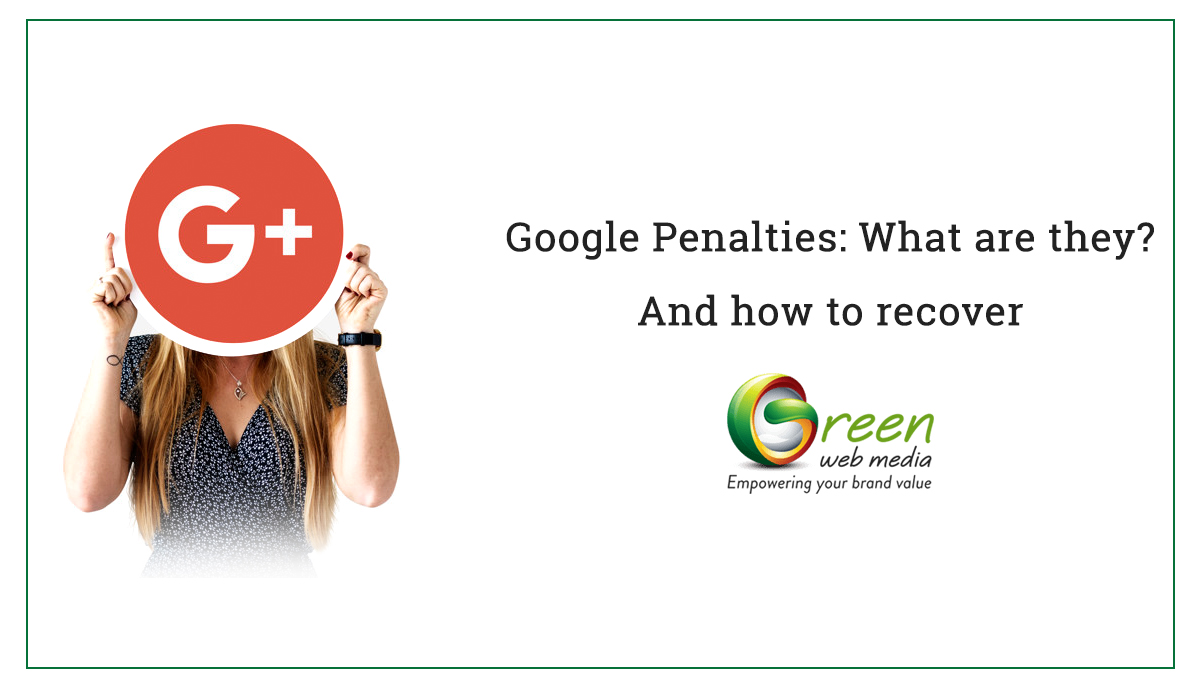Google Penalties: What are They? And How to Recover

If you run an online business, search engine traffic is crucial for you. And if you want maximum organic traffic, you need to rank on the top page of Google. But, getting a high ranking on Google is not everyone’s cup of tea. That’s why many companies use black-hat SEO instead of genuine white-hat SEO techniques to get where they want to quickly. But, when Google recognizes a website violating its guidelines, it forces a penalty on that website.
In a Google Webmasters video, Matt Cutts tells you that Google takes over 400,000 manual actions every month. Apart from that, many other websites get penalized due to algorithmic updates like Panda and Penguin. Surprisingly, only 5% of the webmasters send a reconsideration request in a month.
What would you do if you get penalized by Google? Do you know how to recover from any Google Penalty? Well, the Google penalty gives you anxiety, and then you need to hear this out. It is possible to recover from the Google penalty. Below you can learn about various penalties and how to fix them.
What is a Google penalty?

The only reason why Google penalties got created is to stop websites from using deceptive techniques. And how does Google penalizes any website? It takes away the most valuable search rankings of that website. In extreme cases, your website might get de-indexed altogether.
Manual and algorithmic are the two types of Google penalties. A manual penalty occurs when someone from Google flags your website for disobeying Webmaster Guidelines. And the algorithm penalty takes place automatically. It’s a result of Google’s search algorithm flagging your website.
Common Google penalties and their recovery
1 – Cloaking

In simple words, cloaking refers to the practice of showing different content to Google and web visitors. Below are three popular types of cloaking.
I – Cloaking: sneaky redirects
In this type of cloaking, a website sends internet users to different websites than shown to Google. You may face penalties in two ways, partial matches, and site-wide matches. If you want to fix it, navigate to Google Search Console > Crawl > Fetch as Google.
Now, you need to fetch pages from various affected portions of your website. Next, you need to compare content on your web page and content fetched by Google. Once you fix the differences between the two on your website, you can submit a reconsideration request.
II – Cloaking: first click free violation
This cloaking penalty gets imposed on websites that show total content to Google. But when users visit the website, they only see a portion of the content. Websites need to comply with Google’s First Click Free Policy. If not, you can get a penalty as partial and site-wide matches.
If you want to fix the penalty, your web content should be the same as the content shown to Google. You may want to make edits to nullify the differences. And then, you can send a reconsideration request.
III – Cloaking images
Cloaking takes place in the form of images as well. Here, the serving image may get obscured by another image. Or the serving may redirect users away from it. Or users would see a different image than the image served. All such cases get considered image cloaking.
You can fix the issue by showing the same images to both Google and web visitors. After you replace that image with the right one, submit a reconsideration request.
2 – Thin content with zero or little value

Thin content means that your content is poor. Google refers to thin content as shallow pages or low-quality pages. Earlier, Google addressed the issue of inferior content with the Panda update. Scraped content attracts penalty too. It refers to a practice of copying content from other sites without adding any value.
The right way to fix web content is to delete or improve the affected pages. If the page is essential to your website, you must add valuable data to it. You also need to check for duplicate content on your website. You can rely on metrics like dwell time and bounce rate to recognize thin content. After you’ve made necessary changes, you may request a reconsideration from Google.
3 – Unnatural links to your website

Buying links or being part of the backlink schemes are the most common causes of penalty. You should never participate in any link schemes lest you will get a penalty. You may use unnatural links to improve organic traffic. But that results in the violation of Google’s guidelines.
The recovery for this penalty is possible. First, you should download the links to your site using Google Search Console. Scan through the links to identify links violating any guidelines. You can further remove non-conforming links or disavow them altogether. Once your link profile is clean, apply for a reconsideration request.
4 – Unnatural links from your website

Google never tolerates webmasters involved in selling links. Remember, any link that aims to manipulate the search engine ranking deserves a penalty. Google calls such links as unnatural, deceptive, artificial, or manipulative outbound links. The penalty may come in partial matches or site-wide matches too.
You should either remove these links. Or you may modify them using rel=” nofollow” attribute. It helps when you use machete instead of a scalpel while cleaning these links. After you get rid of all unnatural links, please submit a reconsideration request.
5 – User-generated spam

You might have come across span e-mails that attract you with cheap SEO results. It may even promise you page one position. All these are a part of black hat SEO. You will often find user-generated spam in comments, forums, user profiles, and guestbook pages. Partial or site-wide matches are common penalties for such spam.
For recovery, you need to check pages where users leave comments. You may find ads, non-relevant links, or spammy usernames in comments. You have to remove all the inappropriate and spammy content. Further, you should not allow un-moderated content to show on your website. Once you clean the site, you can get the penalty fixed.
6 – Keyword stuffing or hidden content

Keyword stuffing, the term, is self-explanatory. It means that your website contains one too many keywords that don’t add any value to content. Keyword stuffing is one of the primary black hat SEO methods. It used to work earlier, but now it attracts a Google penalty.
The best thing you can do is remove all the spammy keywords from your website. Also, you should know that there’s only one effective way to rank for a certain keyword. You must provide an excellent webpage for that keyword. When you provide the best-quality content with relevant keywords, you’ll get a ranking boost and no penalty.
7 – Hacked website

Hackers out there are looking for ways to exploit WordPress and other CMS. Hackers have an intent to add spammy content and links. They practice cloaking to perform such hacking. Thus, it’s not easy to recognize and fix the malicious content they have injected.
When Google notices such a site, a notification, ‘this site is hacked,’ gets displayed on affected pages. It leads to a significant drop in your rankings. You should approach your web host to fix the issue. You should identify the hacking type, examine the damage, and clean your site. You can rely on someone with strong technical skills to do it for you.
To put it all together
Google penalty is there to discourage webmasters from practicing manipulative or black-hat SEO techniques. Cloaking, unnatural links, spamming, and keyword stuffing are common reasons for a Google penalty. If you ever get a Google penalty, you first need to identify the penalty and its cause. Then, you need to take the necessary measures on your website to recover from it. Finally, you can send a reconsideration request and restore your website.






